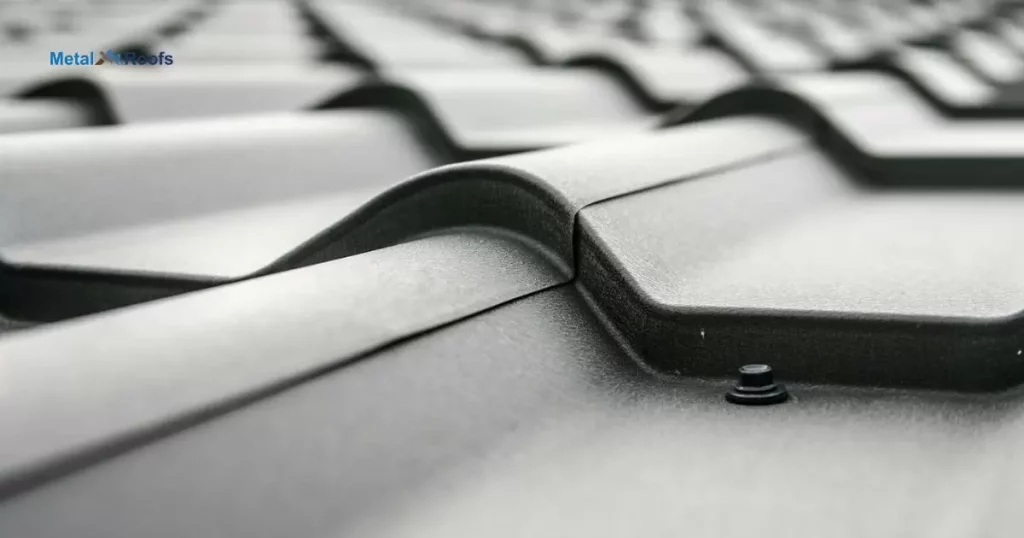When installing a metal roof, one of the most important decisions you’ll face is whether to place the screws on the rib or the flat part of the metal panels. This choice can significantly impact the roof’s durability, weather resistance, and overall performance. In this comprehensive guide, we’ll explore the differences between placing metal roof screws on the rib or flat, their advantages and disadvantages, and best practices for a secure and long-lasting installation.

Understanding Metal Roof Screws
Metal roof screws are designed to fasten metal roofing panels to the underlying structure. They come with specialized washers and gaskets that provide a watertight seal to prevent leaks. The placement of these screws can affect the roof’s integrity and longevity, making it crucial to choose the right method for your specific needs.
Metal Roof Screws On Rib Or Flat: Pros and Cons
Screwing on the Rib
The rib, or the raised portion of the metal panel, is a common location for screw placement. Here are the advantages and disadvantages of this method:
Advantages
- Reduced Risk of Leaks: Placing screws on the rib minimizes the chances of water pooling around the fasteners, reducing the risk of leaks.
- Thermal Movement: Screws on the rib allow for better accommodation of thermal expansion and contraction, reducing stress on the screws and panels.
- Improved Airflow: Elevating the screws on the rib can improve airflow under the panels, helping with ventilation and preventing moisture buildup.
Read too: Is It Reasonable to Ask the Seller to Replace the Roof?
Disadvantages
- Potential for Panel Deformation: Over-tightening screws on the rib can cause the panel to deform or warp, affecting the roof’s appearance and performance.
- Difficult Installation: Aligning screws on the rib requires precise placement and can be more challenging during installation.
Screwing on the Flat
Placing screws on the flat part of the metal panel is another common method. Here are the pros and cons of this approach:
Advantages
- Ease of Installation: Screwing on the flat surface is generally easier and faster, requiring less precision.
- Secure Fastening: The flat surface provides a larger area for the screw to grip, ensuring a strong and secure attachment.
- Consistent Appearance: Screws on the flat create a uniform look, which can be aesthetically pleasing.
Disadvantages
- Higher Risk of Leaks: Screws on the flat are more exposed to water, increasing the risk of leaks if the seal is compromised.
- Thermal Stress: The flat surface may not accommodate thermal expansion as well as the rib, potentially leading to fastener fatigue over time.
- Moisture Accumulation: Water can pool around screws on the flat, leading to potential corrosion and degradation of the fasteners.
Best Practices for Installing Metal Roof Screws
Regardless of whether you choose to place your metal roof screws on the rib or flat, following best practices is essential for a durable and leak-free installation.
Use the Right Screws
Selecting the correct screws for your metal roof is crucial. Look for screws with:
- Corrosion-Resistant Coating: Screws should have a protective coating to prevent rust and corrosion.
- Neoprene Washers: These washers create a watertight seal, protecting against leaks.
- Self-Drilling Tips: Self-drilling screws make installation easier and faster.
Proper Screw Placement
For optimal performance, adhere to the following guidelines for screw placement:
- Spacing: Space screws evenly, typically 12 to 24 inches apart, depending on the manufacturer’s recommendations and local building codes.
- Alignment: Ensure screws are aligned correctly and driven straight to prevent stress on the panels and fasteners.
- Tightening: Avoid over-tightening screws, which can damage the panels and compromise the seal. Screws should be snug but not overly tight.
Sealant Application
Applying a high-quality sealant around the screw heads can provide additional protection against leaks. This step is particularly important for screws placed on the flat surface.
Regular Maintenance
Regular inspection and maintenance are vital to ensuring the longevity of your metal roof. Check for:
- Loose or Missing Screws: Tighten or replace screws as needed to maintain a secure attachment.
- Corrosion: Look for signs of rust or corrosion around the screws and washers.
- Seal Integrity: Ensure that the neoprene washers and any applied sealant are intact and providing a proper seal.
Factors to Consider When Choosing Screw Placement
Several factors can influence the decision to place metal roof screws on the rib or flat. Consider the following:
Climate and Weather Conditions
In areas with heavy rainfall or snow, placing screws on the rib may be more advantageous to reduce the risk of leaks and water pooling. Conversely, in regions with extreme temperature fluctuations, rib placement can better accommodate thermal expansion.
Roof Design and Pitch
The design and pitch of your roof can also impact screw placement. Steeper pitches may benefit from rib placement to facilitate water runoff, while flatter roofs might require additional sealant and precautions if screws are placed on the flat.
Manufacturer Recommendations
Always consult the manufacturer’s installation guidelines for your specific roofing panels. These recommendations are tailored to the product’s design and performance characteristics and should be followed closely.
Personal Preference and Aesthetics
Finally, personal preference and aesthetic considerations can play a role in your decision. Some homeowners prefer the uniform look of screws on the flat, while others prioritize the functional benefits of rib placement.
Conclusion
Choosing between placing metal roof screws on the rib or flat is a critical decision that can impact the performance, durability, and appearance of your metal roof. Both methods have their advantages and disadvantages, and the best choice depends on various factors, including climate, roof design, and personal preference.
By understanding the pros and cons of each approach and following best practices for installation and maintenance, you can ensure a secure and long-lasting metal roof that protects your home and enhances its value. Whether you opt for rib or flat placement, the key is to use high-quality materials, adhere to manufacturer guidelines, and perform regular inspections to keep your roof in top condition.



Leave a Reply